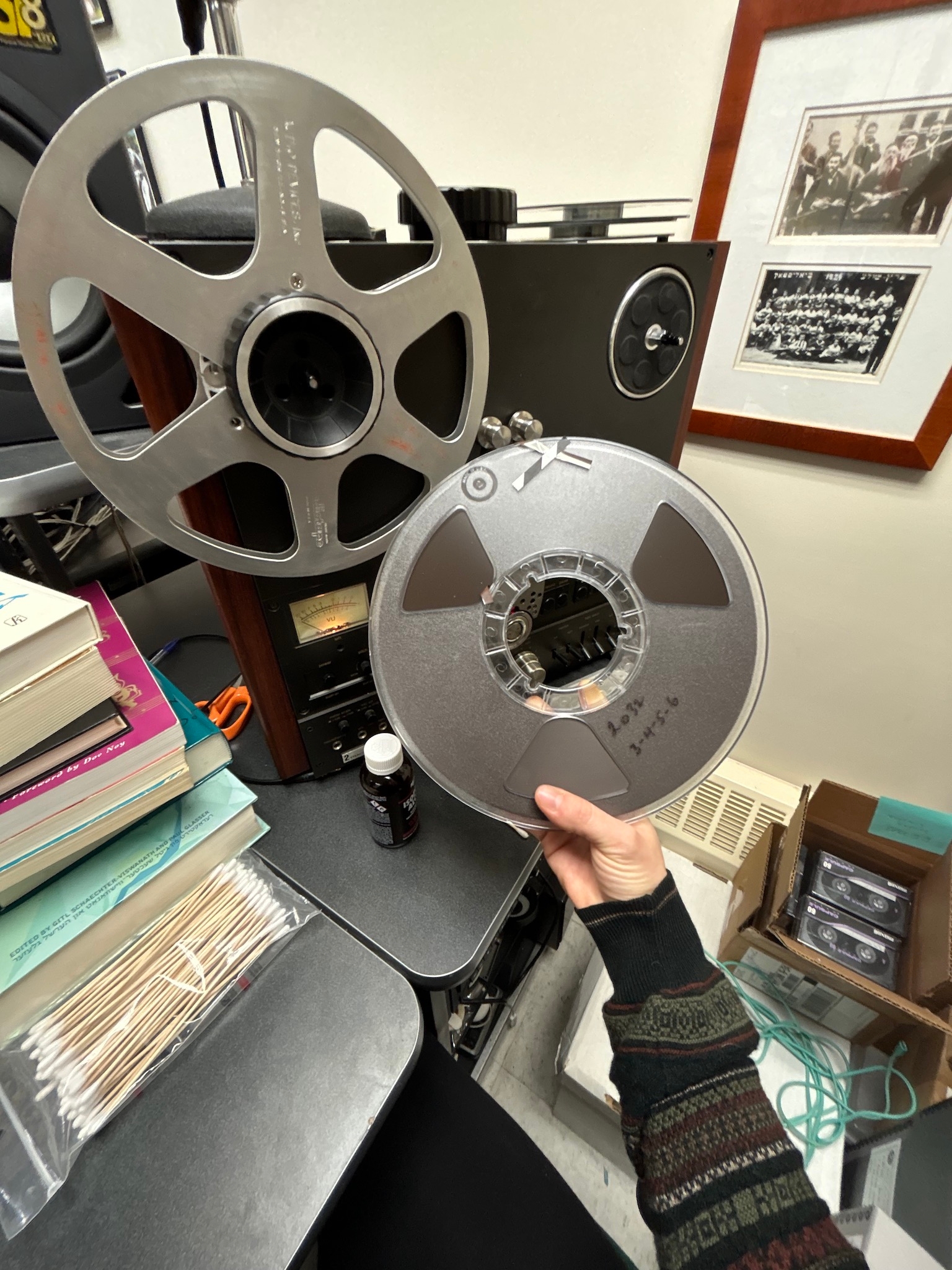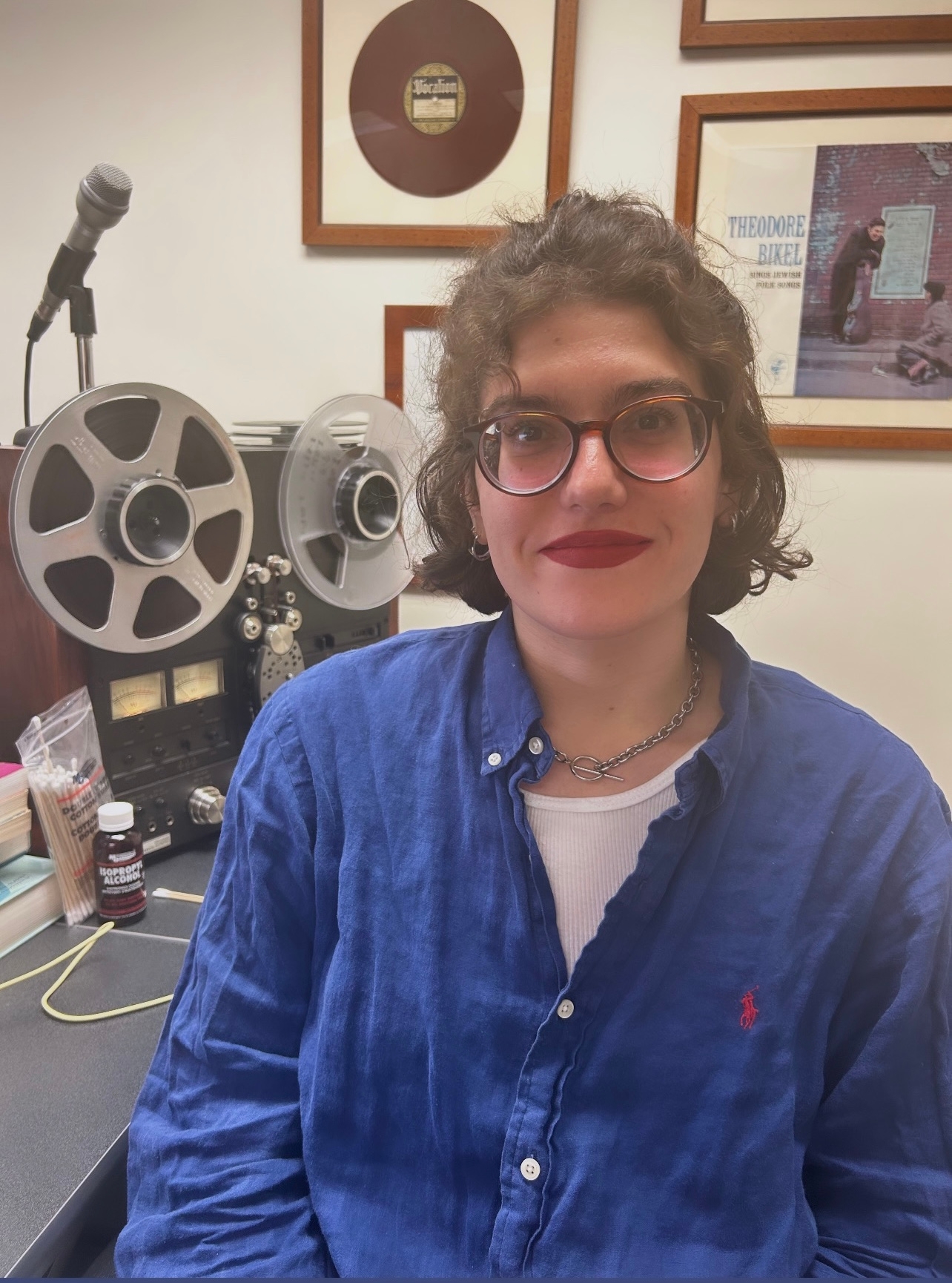Working in the YIVO Sound Archive was an incredibly useful and edifying experience and helped me develop my skills in moving image archiving and preservation. During my time at the YIVO Sound Archive, I was tasked with digitization of a 1/4" open-reel audio tape collection from start to finish. This entailed migrating audio recordings from 1948-1951 from their 1970s archival standard format (open-reel tape) to digital files for digital preservation and access. The recordings that I worked with will be made available to the public with a finding aid and uploaded via Archive Space to the YIVO Institute's open library for researchers, scholars, and Yiddishists.
During my time at the YIVO Sound Archive, I learned how to work with audio archival digital tools such as ClickRepair and Sound Studio as well as analog audio recording playback equipment such as the Technics 2-track Open-Reel Deck. The afformentioned digital tools were incredibly useful in assisting my workflow as I 'cleaned up' the recorings of clicks and pops once they were captured as digital files from analog audio recordings. The original format of the audio recordings were Sound Scriber disks which were located on-site composed of grooves embossed into soft vinyl (plastic deformation). The most challenging part of my experience digtizing and cataloging the YL Folklore Club Collection at the YIVO Sound Archive, was thinking through problems with intellectual control and accounting for how to make notations for where each recording lived across formats in YIVO's archiving systems of naming and cataloging. As each format, Sound Scriber Disk, Audio Tape, and Digital Files operated organizationally with different intellectual control and format limits. Sound Scriber Disks for instance have a 15 minute limit for recording on each side of each disk. This limitation informed how audio recordings were originally captured, often requiring multiple disks for various conversations organized by one unique number (to denote one session of recording for the Folklore Club) and later migrated to the archival tapes with up to one-hour recording possibility. When formatting Digital Files and recording metadata in the YIVO spreadsheets, my workflow required forms of labeling and documentation that could account for which Sound Scriber collection of disks belonged to which unique conversations and which video tape these conversations were migrated to. Keeping this information organized and documented proved crucial in the archival workflow should the sound archivists ever need to return to the original recordings on either the tape or Sound Scriber formats.

